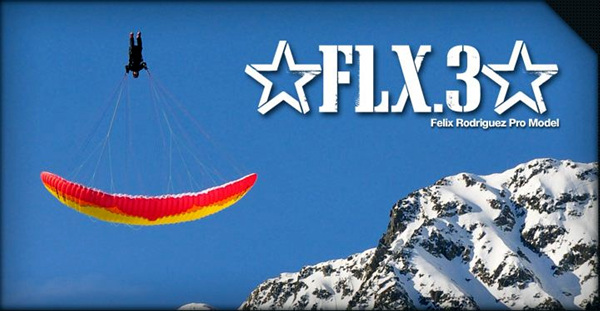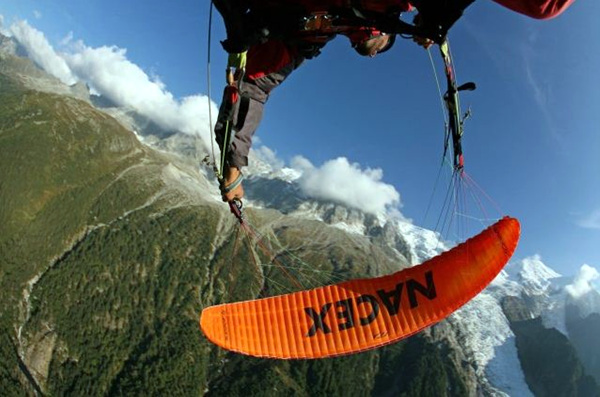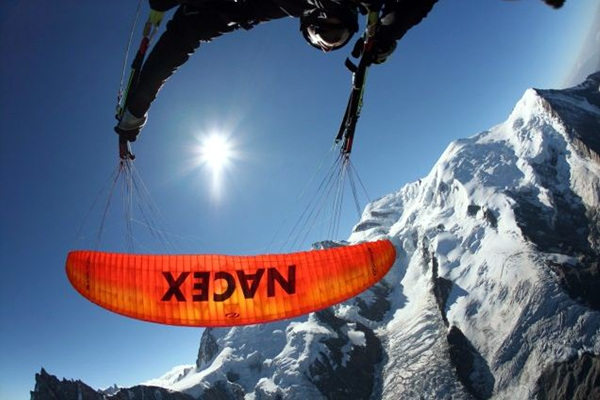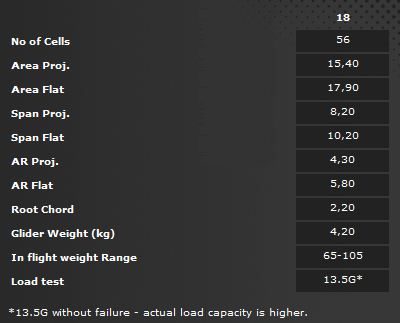FLX.3
페이지 정보

본문

Designed by Dav Dagault with Felix Rodriguez and the Ozone Test Team, the FLX.3 is the third generation of our ultimate competition acro wing.
Although Felix was quite happy with the FLX.2 and flew it successfully for two competition seasons, he continued to work on the wing and provide feedback to David Dagault, our designer. The result of this continued research and prototyping is the most cutting edge acro wing in our history.
This wing is designed for experienced and competition acro pilots who know what they need, and want to fly like Felix Rodriguez.
Q&A With Felix
Oz: What is the main difference about the FLX.3 compared to the 2?
Felix: The FLX.3 has a better profile. It’s a higher performance, more aggressive profile. Also, the FLX.3 has much more internal pressure which gives it more than enough power and energy to do all the acro maneuvers easier. And not only are they easier, but the glider looks nicer in the maneuvers.
Oz: What maneuvers are easier?
Felix: Almost all the maneuver are easier, especially the Rythmic SAT, tumbling, and heli: The heli on the FLX.3 has the tendency to center by itself once you are on it, it maintains stability without much correction. Also because of this, the glider has a very nice SAT-to-heli and twister.
SAT maneuvers:
Tumbling the FLX.3 is easy to understand, the glider has a really compact feel and quite a lot energy - those two things will tell you when you must check the wing,and also if you can keep the Rythmic until the infinity.
The rythmic is like it should be: easy to build it up, and the (secret) is to have the good timing to pull the brake, then the glider will dive fast.
The infinity: for the pilot who knows how to do it, this is lovely glider to do it, once it’s in the middle you don’t need too much correction, you can do 6 to 10 turns without touching the brakes.
For the pilots who want to learn how to do infinity this is a perfect glider to learn it. The profile is fast and the internal pressure is high, and the glider feels very compact… those are the qualities that the pilot needs to learn the infinity safely.
Oz: Do you have any advice for finding the helico, and the Infinite Tumble?
Felix: My advice:
For helicos, it is hard to explain however the best I can tell for learning it is:
1. Learn how to ‘tailslide’ (fly backwards in full stall) then release one hand, let it turn until it’s stable… once it is unstable stop it by full stall.
2. After this first step it’s always good to practice entry from negative spin: pull one brake until you stall one side, and then release it halfway and try to keep the rotation, stable.
3. The easiest entry for most people is from parachutal stall: brake your glider symmetrically, progressively, and slowly, until your glider stops normal forward flight but is still open, then keep one hand down and release the other… keep turning until it regains stability, once it is unstable STOP IT.
For tumbling:
The feedback of the FLX.3 really tells you if you can do one more turn or not – just listen to the wing and it will tell you if you can keep one more turn and one more until… infinity. My advice to the pilots who want to learn infinity is to go slow, to try a lot of tumbling and rhythmic SAT without collapses, then and only then should you go for the infinity. The FLX.3 is the sort of glider that acro pilots will love for its great handling, compact feel, high internal pressure, and simple feedback.
The glider does not feel too aggressive or dangerous, not more than the FLX.2 for sure. It does not have the tendency to cravat, and in general it feels like an LTF / EN D wing.
Enjoy!
Felix R.
(Note from Ozone – the FLX.3 is not LTF or EN certified, only load tested).




Materials
Cloth:
>> Top surface = Skytex 45 Evolution
>> Bottom surface = Skytex 40 Classic
>> Rib cloth = Skytex 45/40 Hard
Lines:
>> Uppers = Liros DSL70
>> Lowers = Edelrid 6843-200
- 이전글MAGNUM 20.07.16
- 다음글OCTANE FLY 20.07.16